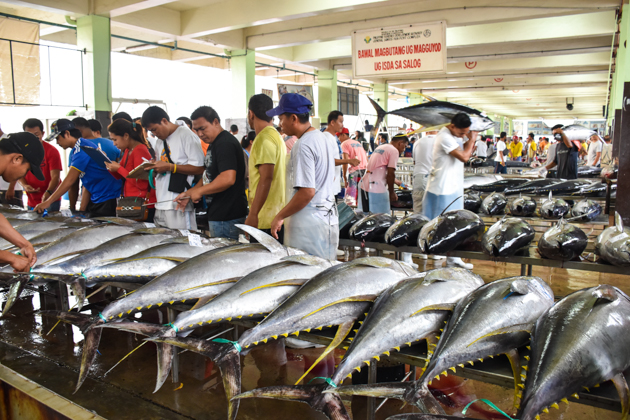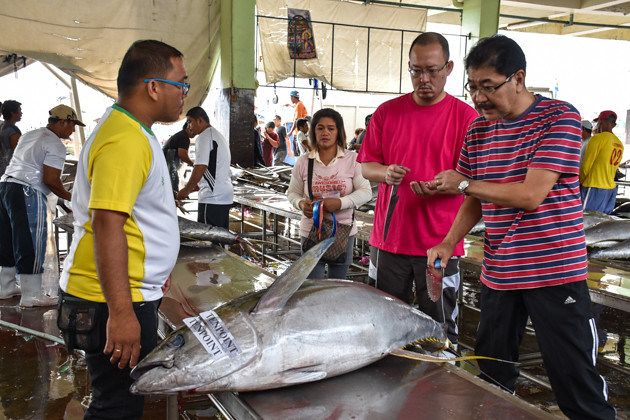Tension mounts at General Santos Fish Port Complex (GSFPC), strategically located in Brgy.Tambler, General Santos City in South Cotabato, as determined buyers and exporters compete for tuna. Sporting white boots, hired laborers hurry like ants while lifting the gigantic fishes from the large boats to the weighing stations. They are classified for pricing, and the best ones are exported.

“The SOCSKSARGEN tuna industry – 90% of which is based in General Santos City – lands around 350 metric tons of tuna (yellowfin, skipjack and big eyes) per day. 30% is exported to US, Europe and Japan, 30 % goes to the local market and 40% is processed,” says John Lee, Quality Control at the GSFPC. The Philippines is ranked second largest canned and process tuna manufacturer in Asia, seven tuna canneries in the country are based in General Santos City; making it the “Tuna Capital of the Philippines”.
“All the processing plants here are HACCP (Hazard Analysis and Critical Control Point) accredited, a system developed by the World Health Organization which is designed to ensure the safety of food products processed by establishments around the world,” Lee continues.
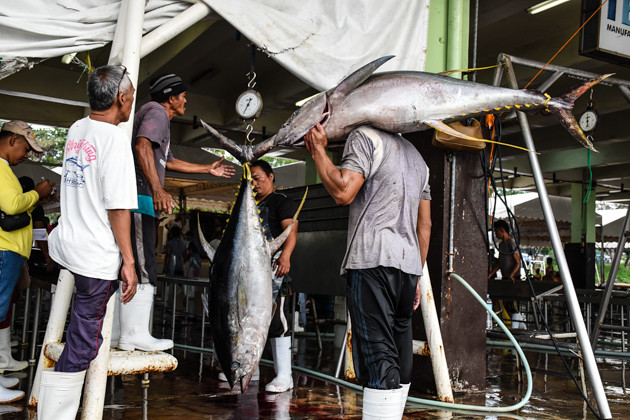
Data from the official records of the Philippine Fish Port Development Authority (PFDA) shows a total of 193,867.55 metric tons of fish landings in 2014. This is the highest recorded fish landings since 2003. Together with other exporters, Tokyo Kawari, a trainee at Ten Point, an affiliate of Pescarich – a Japanese firm known for its frozen sashimi, tuna and other marine products – examines the color and fat content of the tunas that will be packed for sale overseas.

“Today, the price ranges around Php 270- 300 per kilo, depending on the class,” he explains as he pierces the fish with a long probe. The greasier the probe comes back, the higher the grade. Nothing is wasted; all parts of the tuna are maximized for profit. Even meats from the gills are sold to be processed as fish food. “ The head is priced at Php 75 per kilo, the innards at Php 70, the bihod (caviar) is priced at Php 180 and the bagabay ( fish gonad) at Php 170”, reveals Dario Barcelona, a middleman.
These parts are sold to the local market and are usually served at homegrown restaurants like Ranchero, situated at SM City General Santos. Try their kinilaw (ceviche) trio (Php 295) which is perfect as appetizer, pulutan or main dish. “It is composed of classic tuna kinilaw (Php 175), sinuglaw (Php 235) – a marriage of grilled pork belly and classic tuna kinilaw and kinilaw ala ranchero (Php 195) – kinilaw with a touch of coconut cream and sprinkled with mango slices,” explains Rachel Sunglao. The grilled tuna belly (Php 85 /100 gram) does not disappoint either; they usually use bigeye (Thunnus obesus) since it has a high fat content perfect for grilling.
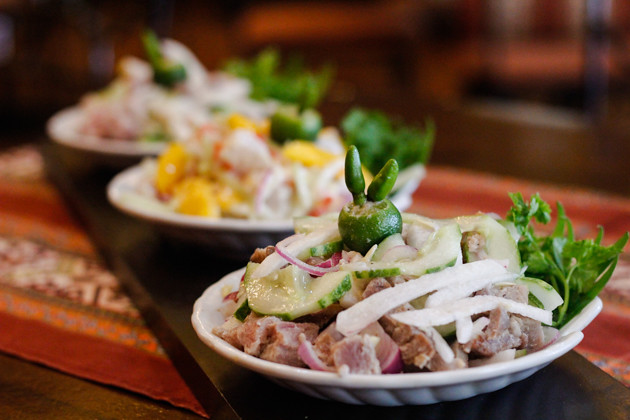
Undoubtedly, General Santos has become synonymous to tuna, and its fishing industry is scrambling to supply growing international demand. But the overexploitation, the dwindling stocks and the decline in tunas caught in Philippine waters is alarming. A large portion of the tunas landed in GSFPC reportedly comes from Indonesian waters, and strict enforcement of Indonesian government against illegal fishing leaves our fishermen fearing for their futures. If conservation measures and sustainable management of tuna resources are not taken seriously, the SOCSKSARGEN region will suffer a great loss.
How to get to the Fishport Complex in Brgy.Tambler:
From General Santos
Philippine Airlines and Cebu Pacific flies to General Santos. At the city center, you can charter a tricycle to take you to the port. Or if you are alone, ride a tricycle to take you to the market. Ask around where you can charter a motorbike to take your to the Fishport Complex. It’s around Php 150 one way. Or if you are lucky, you can ride the tricyle with the locals for only Php 20 per head. Going back, there are motorbikes parked at the market that can take you back to the city. I paid Php 100 for my return trip.
Be early at the port. I suggest leave the city around 5:30 AM. At the gate of the Fishport, you have to register and show a valid ID. Take note, dresscode applies. No slippers, no sleeveless short, no shorts. Now once you are allowed to get inside, you can rent a white rubber boots for Php 20. You have to wear this at the market. People here are used to tourists, most of them are accommodating. But please make sure you are not a hindrance to their activities.
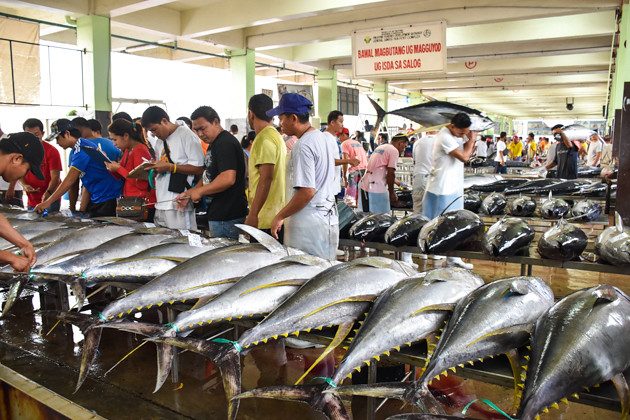
From Davao
Take a bus bound for General Sanyos from Ecoland Terminal. Fare for airconditioned bus is around Php 199. Travel time is 3 hours. At the bus station in General Santos, drivers can be very persistent and charges around Php 150 to take you to the city center.
* All photos were taken using Nikon D5500 .
Nikon Philippines
Website : www.nikon.ph
Facebook : Nikon Philippines
Instagram: @officialnikonph
- Disclosure: Tuna Meal was sponsored by Ranchero Grill at SM General Santos City.
TRAVEL BLOG CONTENTS
FOLLOW ME ON FACEBOOK FOR TRAVEL GUIDE UPDATES

